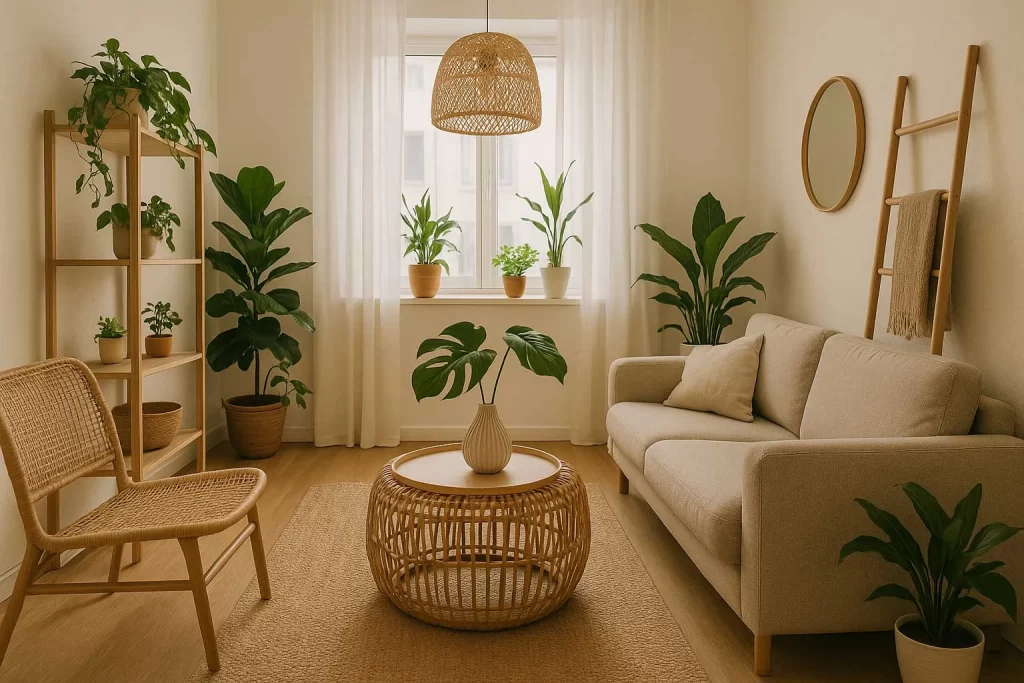
In today’s urban landscape, small apartments have become the reality for many city dwellers. While these compact spaces offer convenience and affordability, they often lack a vital connection to nature. This is where biophilic design steps in—a thoughtful approach to creating living spaces that satisfy our innate need to connect with the natural world, even within limited square footage.
What Is Biophilic Design?
Biophilic design is a concept used in the building industry to strengthen the connection between occupants and the natural environment. The term “biophilia,” popularized by biologist E.O. Wilson, refers to humans’ inherent tendency to seek connections with nature and other forms of life.
For the 99% of human history when we lived in close proximity to nature, our bodies and minds developed in harmony with natural environments. This evolutionary relationship has encoded within us a fundamental need to affiliate with natural elements—a need that remains crucial to our physical and mental health even in modern urban settings.
Unlike basic “green” building practices that simply aim to minimize environmental impact, biophilic design actively seeks to fulfill our intrinsic need for nature connection through three main experiences:
- Direct experience of nature: Light, air, water, plants, animals, weather
- Indirect experience of nature: Images, materials, colors, shapes that evoke nature
- Experience of space and place: Creating environments that reflect natural settings
Why Small Apartments Need Biophilic Design
Small apartment dwellers stand to gain significantly from biophilic design. Research shows that integrating natural elements into compact living spaces can:
- Reduce stress and anxiety levels
- Improve focus and cognitive function
- Enhance mood and overall well-being
- Promote better sleep through improved circadian rhythm regulation
- Create a greater sense of spaciousness in limited areas
- Purify indoor air, which is often more polluted than outdoor air
With urbanization increasing globally and more people spending substantial time indoors, these benefits become even more critical for mental and physical health.
Maximizing Natural Light in Limited Spaces
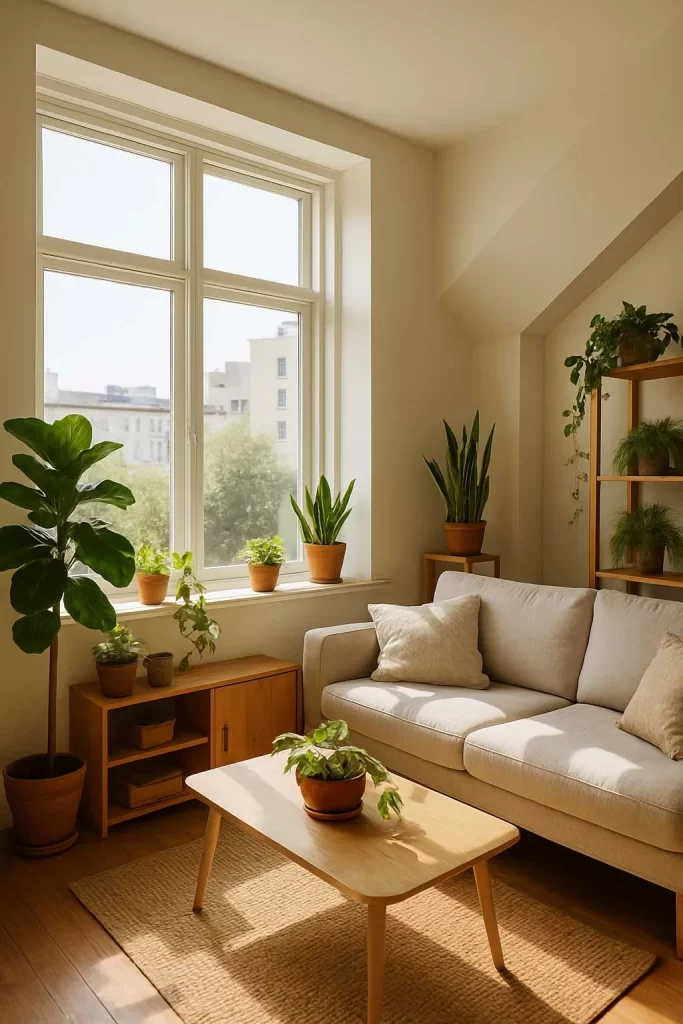
Natural light is the cornerstone of biophilic design. In small apartments, optimizing daylight creates a sense of openness while fostering stronger connections with natural cycles.
Practical strategies include:
- Replacing heavy curtains with sheer or light-colored window treatments
- Strategically placing mirrors to reflect and multiply natural light
- Using light, reflective paint colors on walls and ceilings
- Keeping window areas clear of bulky furniture
- Considering glass partitions instead of solid walls for interior divisions
- Using artificial lighting that mimics natural daylight when needed
Even apartments with limited window access can benefit from these approaches. Placing a mirror opposite a window can effectively double the perceived light in a room, while light-diffusing window films can reduce glare without sacrificing brightness.
Vertical Plant Integration
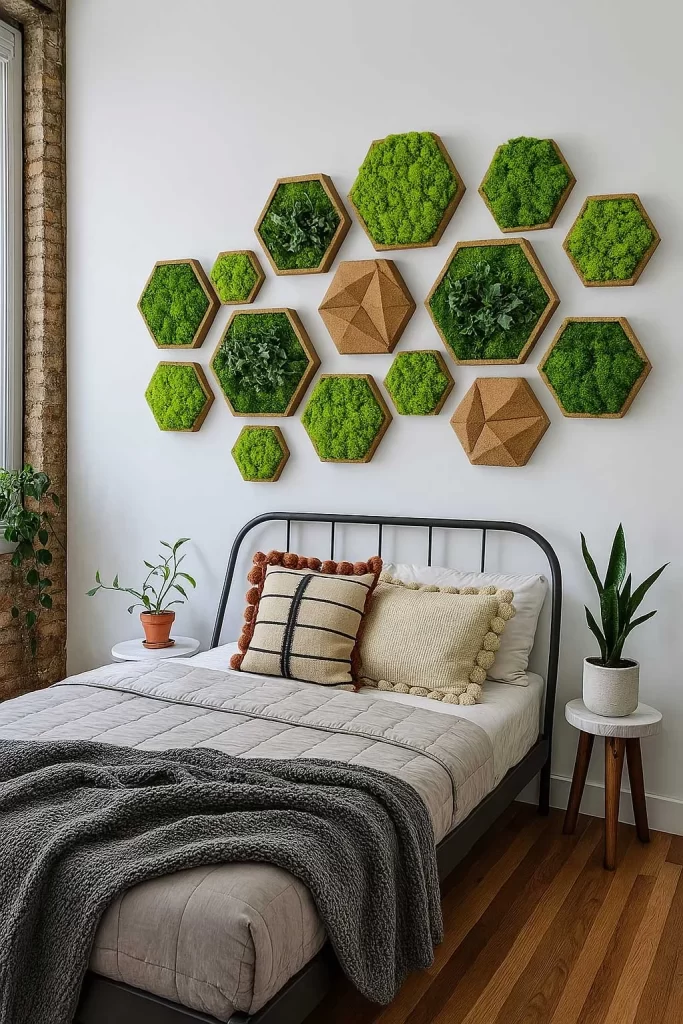
Plants are powerful biophilic elements, but floor space in small apartments is precious. The solution? Think vertically.
Space-saving plant displays include:
- Living walls and green walls that transform blank vertical surfaces
- Vertical planters and modular shelving systems designed for plants
- Hanging planters suspended from ceilings or walls
- Utilizing shelves above doorways and windows
- Integrating planters into furniture like coffee tables or desks
- Mini-terrariums for minimal-maintenance greenery
When selecting plants, consider light conditions, maintenance requirements, and air-purifying qualities. Low-maintenance varieties like snake plants, pothos, ZZ plants, and philodendrons thrive in varying light conditions while improving air quality.
The Power of Natural Materials
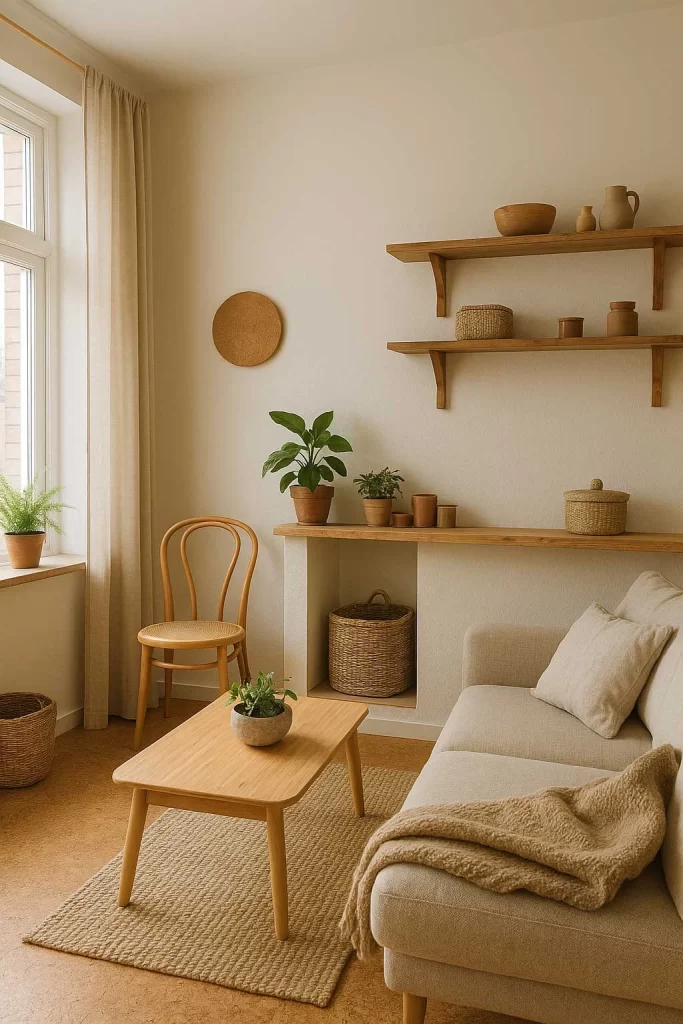
Incorporating natural materials provides a tactile connection to the outdoors without requiring additional space. Even small touches can have a significant impact.
For small apartments, consider:
- Wooden wall shelves for storage and display
- Compact bamboo furniture, which is lightweight and sustainable
- Small stone accents in kitchens or bathrooms
- Decorative elements made from natural materials
- Cork flooring or coasters
- Jute rugs, linen curtains, and wool throws for texture
Reclaimed wood pieces add character while supporting sustainability. Even something as simple as replacing plastic storage containers with woven baskets can enhance the biophilic quality of your space.
Nature-Inspired Colors and Patterns
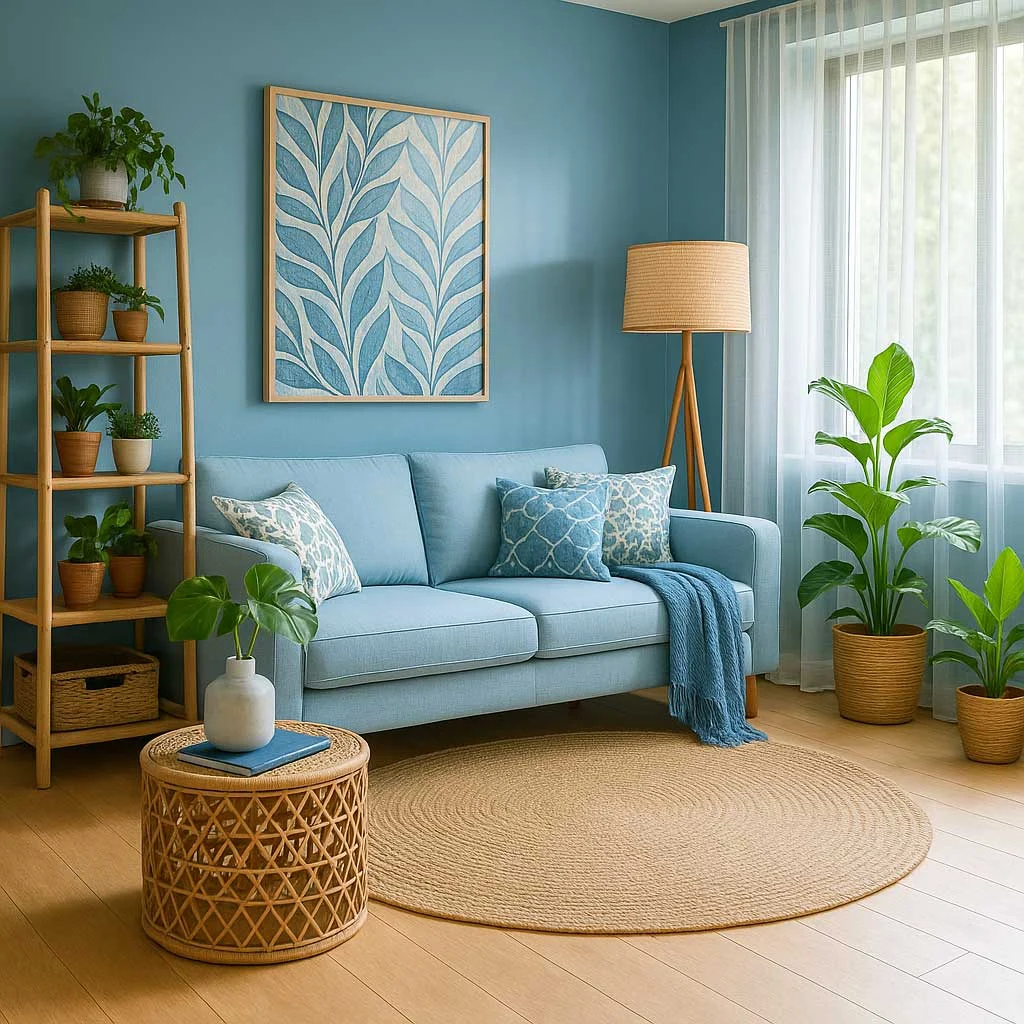
When direct incorporation of natural elements isn’t possible, colors and patterns can evoke similar psychological responses.
Biophilic color strategies for small spaces:
- Earth tones like browns, beiges, and ochres create warmth
- Various shades of green connect to plant life
- Blues evoke water and sky, creating a sense of openness
- Lighter natural tones can make spaces feel larger
Patterns inspired by nature—such as botanical motifs, organic shapes, or wave-like designs—add visual interest without occupying physical space. Even subtle textures that mimic wood grain, stone, or leaf patterns can evoke nature’s complexity.
Multifunctional Furniture with Biophilic Elements
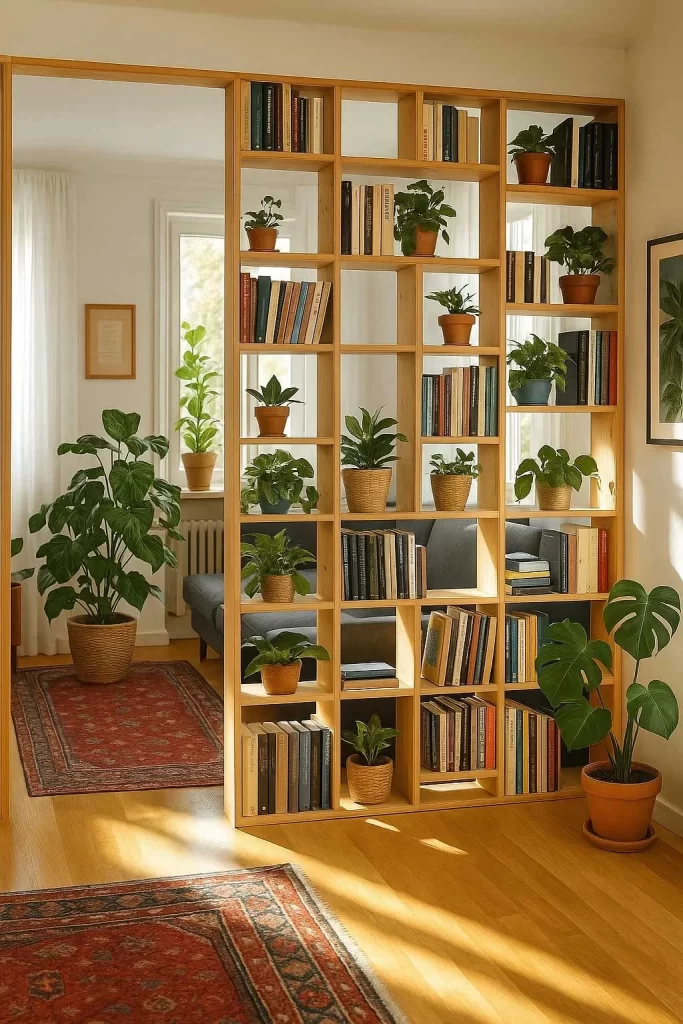
In small apartments, furniture must work harder. Combining biophilic design with space-saving solutions creates harmony between functionality and nature connection.
Smart biophilic furniture solutions include:
- Coffee tables with integrated planters
- Desks with compartments for small plants
- Storage ottomans upholstered in natural fabrics
- Wall-mounted fold-down tables made from natural wood
- Room dividers that double as vertical gardens
- Beds with under-storage for seasonal items
These dual-purpose pieces maximize limited space while maintaining biophilic principles. Additionally, using biophilic elements to create zones can help define areas in studio or open-plan apartments without physical walls.
Optimizing Ventilation and Air Quality
Fresh air circulation is a vital but often overlooked aspect of biophilic design. Proper ventilation mimics outdoor conditions and supports overall health.
Strategies to enhance airflow include:
- Creating cross-ventilation by opening windows on opposite sides when possible
- Using fans to circulate air and create gentle breezes
- Ensuring furniture placement doesn’t block natural airflow
- Installing window vents for continuous fresh air
Air-purifying plants like snake plants, peace lilies, and spider plants actively remove common pollutants while adding visual appeal. Grouping plants can increase humidity and create microenvironments that feel more natural.
Top Plants for Small Apartments
Selected for space efficiency, air quality, and low maintenance.
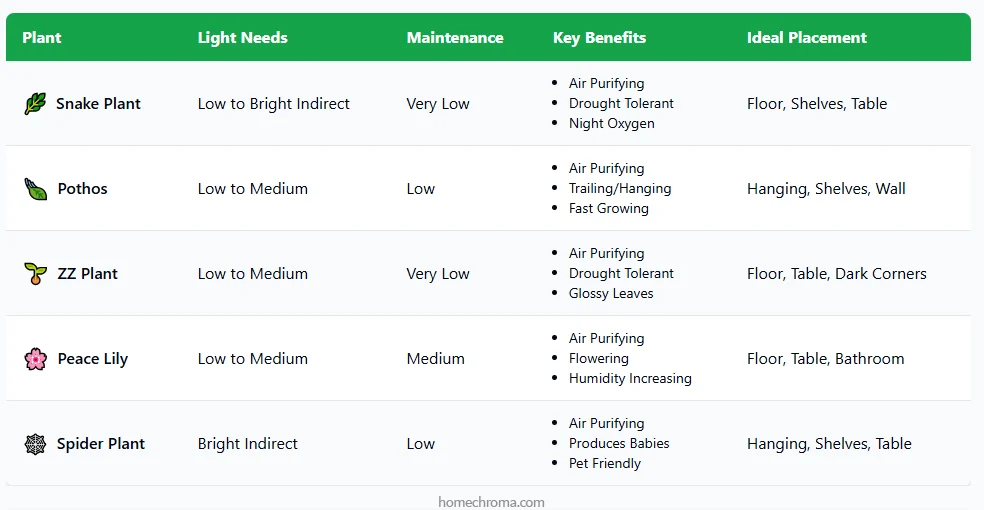
Overcoming Challenges: Budget and Space Constraints
Implementing biophilic design in small apartments comes with challenges, primarily related to space limitations and budget constraints. However, even modest interventions can make a significant difference.
Budget-friendly biophilic solutions:
- Starting with one high-impact element, like a statement plant
- DIY plant hangers using simple materials
- Shopping secondhand for natural material furniture
- Using removable nature-inspired wallpaper for rental properties
- Propagating plants from cuttings rather than buying new ones
- Gradually building a collection of natural elements over time
Remember that biophilic design isn’t about filling every inch with plants or completely transforming your space overnight. It’s about thoughtful integration of natural elements in ways that enhance daily life.
Practical Implementation: A Room-by-Room Approach
Living Area:
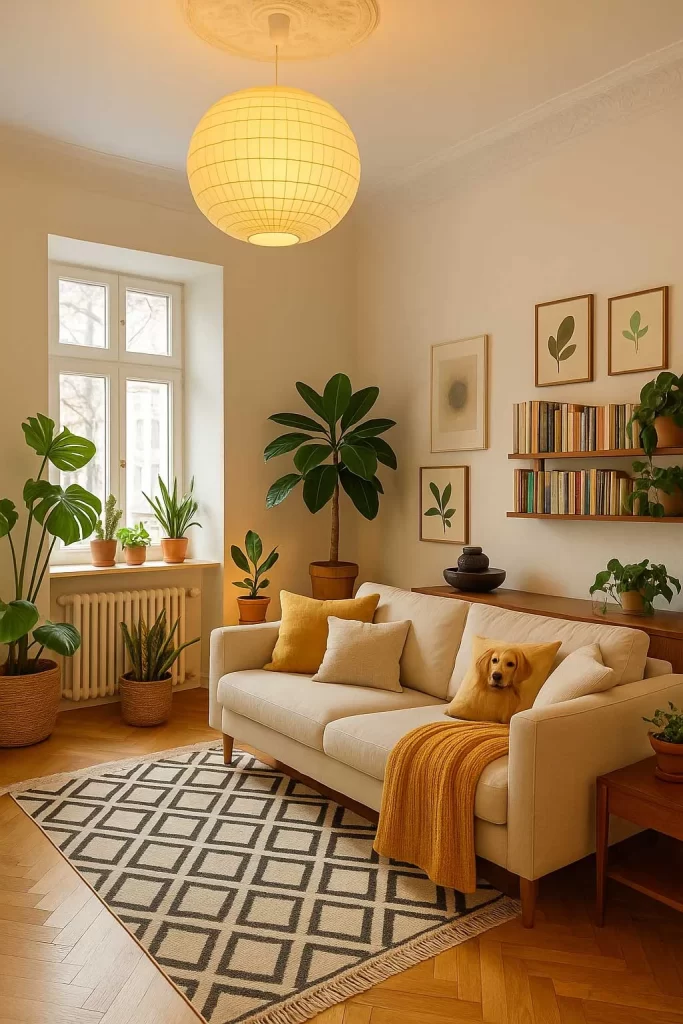
- Position seating to maximize views of windows or plants
- Add a small indoor tree in a corner to create height
- Use natural fabrics for throw pillows and blankets
- Incorporate a small tabletop water feature for sound
Kitchen:
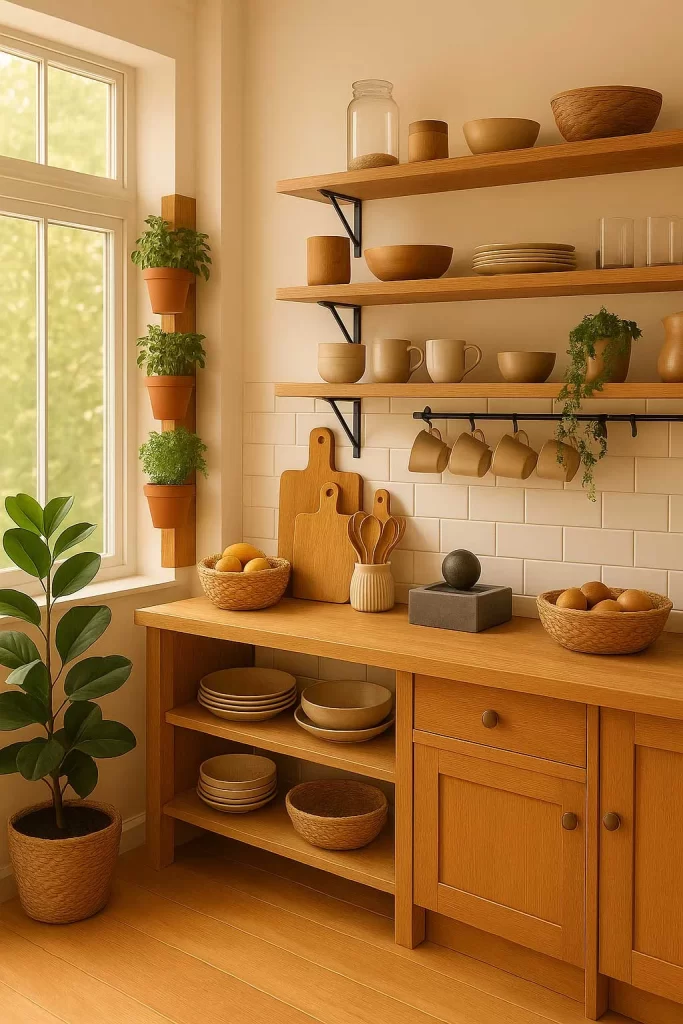
- Grow herbs in vertical planters on a wall or windowsill
- Use cutting boards and utensils made from natural materials
- Display fruits and vegetables in natural fiber baskets
- Install open shelving made from wood for visual warmth
Bedroom:
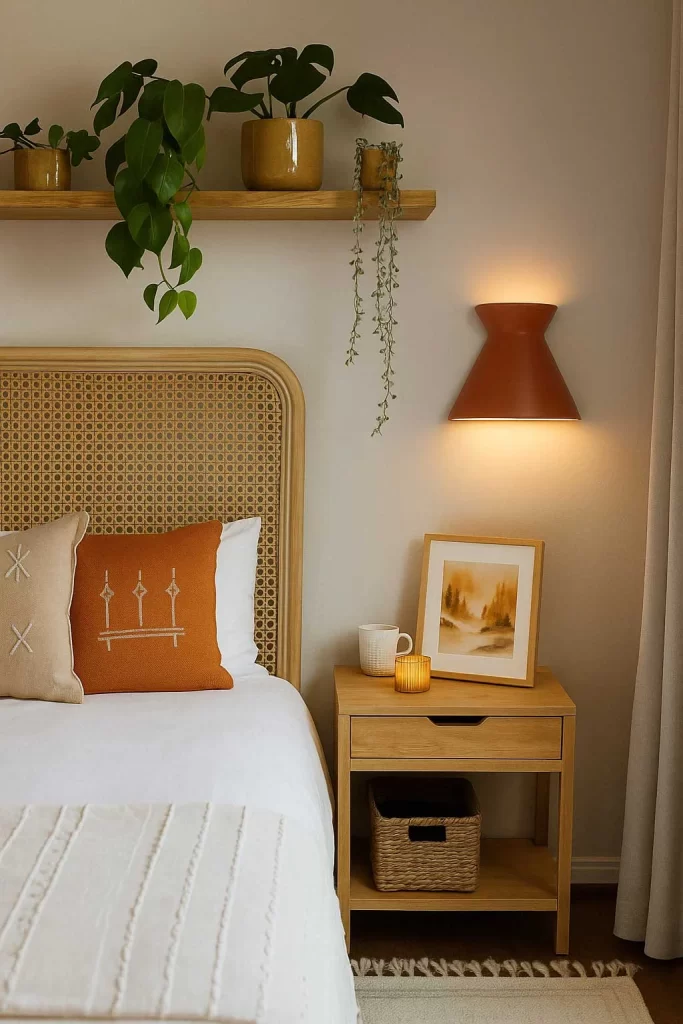
- Position the bed to catch morning light when possible
- Choose natural fiber bedding like cotton or linen
- Use natural scents like lavender or cedar
- Keep plants that release oxygen at night, like aloe vera
Bathroom:
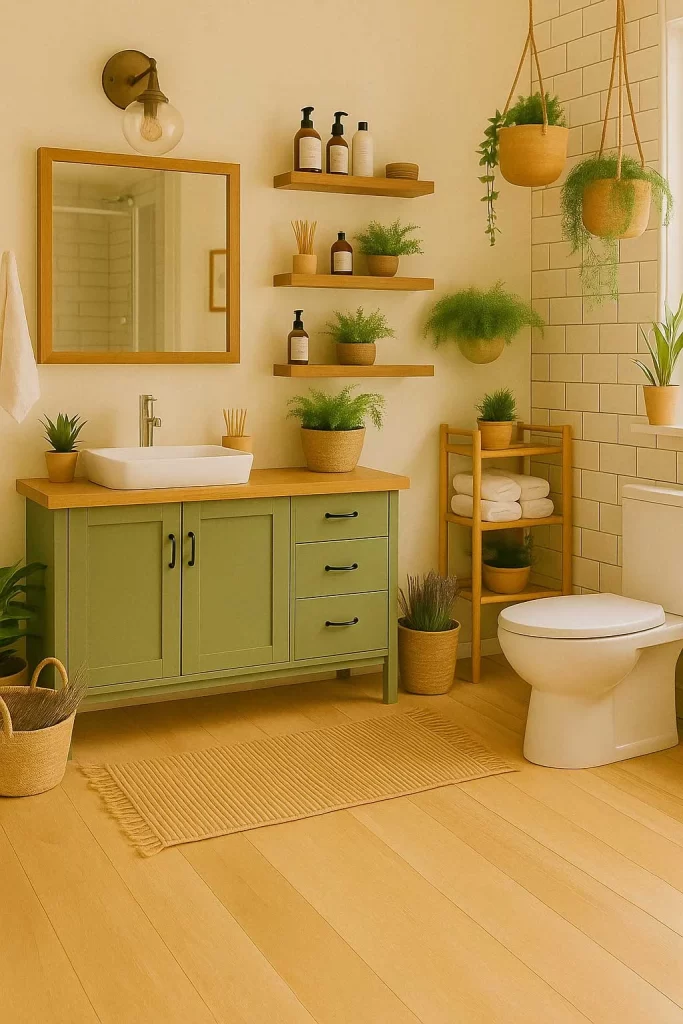
- Add humidity-loving plants like ferns or peace lilies
- Use shower curtains with botanical patterns
- Incorporate natural stones as soap dishes or decorative elements
- Choose wooden bath accessories over plastic ones
The Impact: Measurable Benefits for Small Space Dwellers
The benefits of biophilic design extend beyond aesthetics. Research shows concrete improvements in health and well-being:
- Exposure to natural elements can reduce cortisol levels, a key stress hormone
- Views of nature, even through windows, can improve recovery from mental fatigue
- Natural light helps regulate melatonin production for better sleep
- Indoor plants can remove up to 87% of air toxins within 24 hours
- Connections with nature improve concentration and cognitive function
For those in small urban apartments, these benefits are not luxuries but necessities for maintaining physical and mental health in challenging environments.
Conclusion: Small Spaces, Big Impact
Biophilic design in small apartments represents more than a design trend—it’s a response to our biological need for nature connection in increasingly urbanized environments. By thoughtfully incorporating natural light, plants, materials, colors, and patterns in space-efficient ways, even the most compact apartments can become restorative sanctuaries.
The key lies not in the size of your space but in the intentionality with which you bring nature indoors. Small, consistent biophilic elements can transform the experience of apartment living, creating homes that nurture well-being while respecting practical constraints.
Whether you’re a renter with limited modification options or a homeowner looking to maximize a small footprint, biophilic design offers accessible strategies to enhance your living environment. By fostering this connection to the natural world, your small apartment can become not just a place to live, but a space that truly supports how you want to feel.
Dora Decora is a biophilic interior design specialist and passionate blogger. With a deep commitment to integrating nature into living spaces, Dora specializes in creating environments that foster human-nature connections through thoughtful design elements. Her approach emphasizes sustainable materials, natural lighting, and organic patterns that enhance wellbeing and reduce environmental impact.
This post (https://homechroma.com/biophilic-design-for-small-apartments/) was originally published by Dora Decora on Home Chroma. As an Amazon Associates partner, qualifying purchases are compensated.


